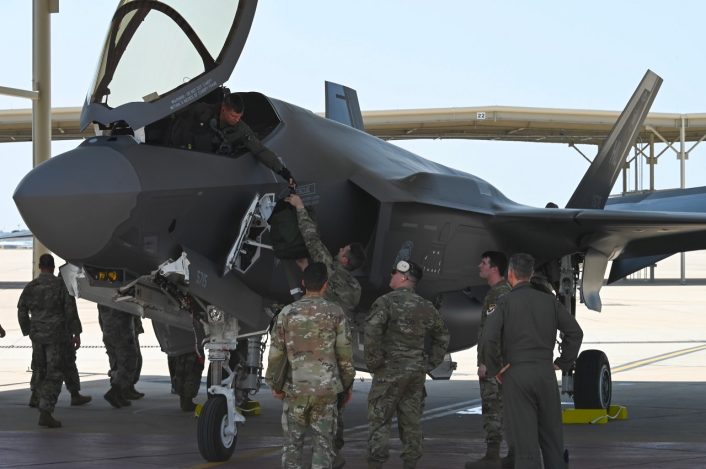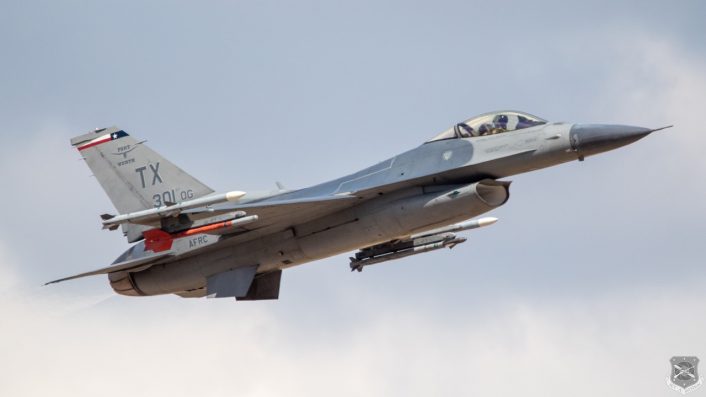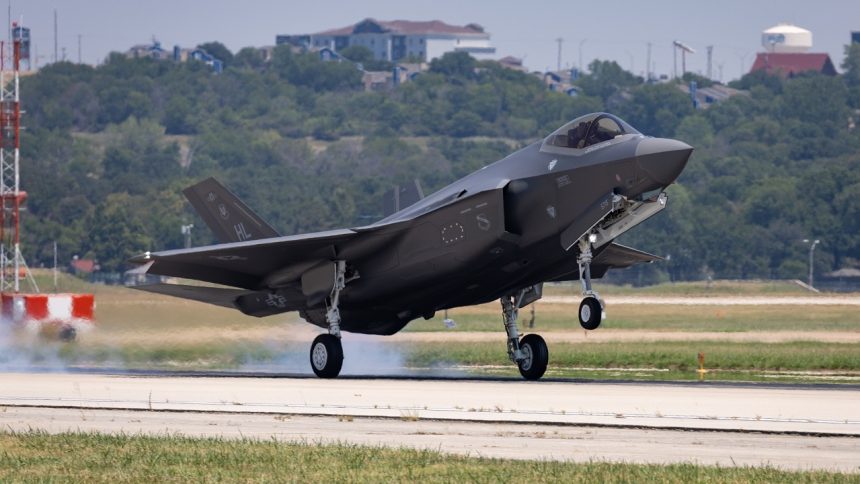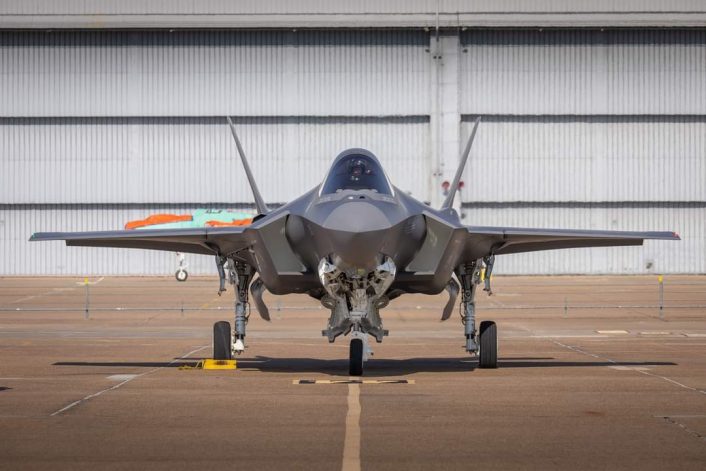The unit becomes only the second Air Force Reserve F-35 unit, but it is also the first Reserve unit to operate the fifth-generation fighter without being associated to an active unit.
On Aug. 8, 2024, the 301st Fighter Wing, based out of NAS JRB Fort Worth, Texas, received its first pair of F-35A fighters to replace the F-16C/Ds that previously operated at the base. Interestingly, the two jets sported the tail flash “HL” of Hill AFB, Utah, with official captions of the photo mentioning that the aircraft are assigned there.
According to Air & Space Forces Magazine, a spokesperson for the 301st FW confirmed that the aircraft are actually on loan to the unit, as their own F-35s, initially expected this summer, will be delivered in November. “These brand new jets have not been to Hill yet, but they will eventually head there,” said the spokesperson. “We’re temporarily using these fighters until then.”
Coincidentally, Hill AFB is home to the U.S. Air Force Reserve’s only other F-35A unit, the 419th Fighter Wing. The 419th is an associate unit of the active duty 388th Fighter Wing. The new mission makes NAS JRB Fort Worth the Air Force Reserve’s first standalone F-35A unit. The Wing will receive a total of 26 airplanes by 2026.
The Wing’s newest fighters simply had to move from the other side of the airfield, where Lockheed Martin’s plant is located, to their new home. Judging by the photos released, it appears that the F-35 started up their engines in front of LM’s hangars, flew a local mission and then landed, but this time they taxied to the flightline of the 301st FW.
It’s unclear if the rest of the Wing’s new fighters will come brand-new from the Lockheed Martin facility on the other side of the airfield or if some will come second-hand from other bases. The spokesperson mentioned that the unit “will be receiving additional aircraft from Lockheed Martin over the next 12 to 15 months,” without further details.

“The arrival of the F-35 marks a new chapter for the 301st Fighter Wing,” said Col. Benjamin R. Harrison, 301st Fighter Wing commander. “While it replaces our aging fleet of F-16s and introduces the most technologically advanced fighter into the wing – none of this would be possible without the dedication and professionalism of our Airmen, civilians, and contractors, or the outstanding support of our community partners.”
Colonel Harrison also explained that the initial training cadre is already trained and ready to go. “Our initial cadre of pilots and maintainers are formally trained F-35 Airmen and were hand-selected to lead the F-35 conversion and we are excited to usher in a new era of combat capability for the wing, AFRC, and the Air Force.”
The Wing joins other new American operators of the type including the Alabama ANG’s 187th Fighter Wing and Wisconsin ANG’s 115th Fighter Wing. The 301st Fighter Wing itself has two flying squadrons, the Reserve 457th Fighter Squadron “Spads” and the active duty associate 24th Fighter Squadron “Leaping Tigers”.
The Wing had previously flown the F-16C/D Fighting Falcon until December 2023. It is worth noting that the F-16s of the 457th FS were not retired, but were redistributed to Nellis AFB, Nevada, where they joined the 706th Aggressor Squadron, and Homestead Air Reserve Base, Florida, where they joined the 93rd Fighter Squadron.

NAS JRB Fort Worth
Naval Air Station Joint Reserve Base (NAS JRB) Fort Worth, located right on Lake Worth, is a massive base on the grounds of the former Carswell AFB. The base hosts the Air Force Reserve’s 301 FW flying the F-35A Lightning II, Texas Air National Guard’s 136 AW with the C-130J Super Hercules, and the Marine Corps Reserve’s VMFA-112 flying F/A-18 Hornets, VR-1 with the C-40A Clipper, and VMGR-234 flying the KC-130J Super Hercules. The Navy Reserve also operates there with VR-59 flying the C-40A Clipper and Army Reserve with the UC-35A and C-12 Huron.
The Tenth Air Force, the Numbered Air Force in charge of the majority of the Air Force Reserve, is also headquartered at “Navy Fort Worth”. Notably, the Texas Air National Guard’s 136th Airlift Wing only recently upgraded from the C-130H to the C-130J in July of 2021. Marine Fighter Attack Squadron (VMFA) 112 is also set to replace their aging legacy F/A-18 Hornets with brand new F-35B Lightning II’s by 2029.
Claiming half of the airfield for itself is the United States Air Force Plant 4 with its massive, 17,000 employee factory building new F-16 Fighting Falcons and all variants of the F-35 Lightning II. The factory is owned by the USAF and operated by Lockheed Martin. The factory began life as a Consolidated factory during World War II building the famous B-24 Liberator and would go on to build the B-36 Peacemaker, B-58 Hustler, F-111 Aardvark, and eventually the F-16 Fighting Falcons and F-35 Lightning II’s built today.










